
Facsimile Magazine, Published by Haoyan of America. Volume Three, Number Eight, 2009. ISSN 1937-2116.

Facsimile Magazine, Published by Haoyan of America. Volume Three, Number Eight, 2009. ISSN 1937-2116.
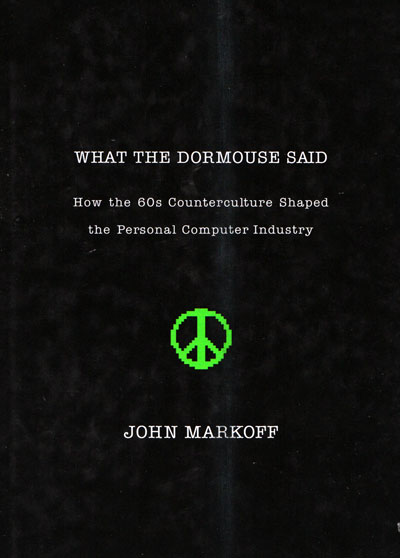
Excerpt from What the Dormouse Said: How The 60s Counterculture Shaped The Personal Computer Industry by John Markoll (Pages 190-199)
Fred's first wife was Susie "Xenia" Williams. Actually, the two were never formally married. Xenia had been active in the anti-draft movement, and they met during a peace march in April of 1967. Then, some months later, they both wanted to participate in a Committee for Non-Violent Action project that required couples to have a "permanently responsible relationship." They accordingly had a "permanently responsible relationship" ceremony.
Before long, they discovered they weren't in love and that they didn't even like being around each other very much. Xenia was nineteen, and Fred was twenty-six, and she was two months pregnant. She was also in the midst of deciding that she was gay and that the "whole child thing" was too much for her.
They separated, but Fred's sense of romanticism and responsibility led him to urge Xenia to try to get back together or, failing that, to let him keep the child. So in 1968, when Irene was born in a hospital in Northhampton, Massachusetts, Fred's mother went there to claim the infant and help arrange the papers that gave Fred guardianship.
Fred and Irene quickly made their way to California, where father and daughter became itinerants, living in rooms in communal houses in various towns around the Midpeninsula - Menlo Park, Mountain View, Palo Alto - and over the hills in Santa Cruz, the tiny beach town, which had only recently achieved college-town status.
Although he wore his hair long with a bushy beard and sported a rainbow belt, Fred Moore was not a hippie, either by inclination or work style. His father had fought in World War II in India, Burma, and China, and he had instilled a work ethic that crossed political lines. Life was not easy for a single father and a political activist who insisted on living on poverty wages to support his work as a full-time organizer. It meant that much of the time he was both breadwinner and day-care provider, often simultaneously. He frequently spent time on the Standford campus, often for political meetings that went on for hours. One Saturday morning, a Stanford police officer was called to the Stanford bookstore after a store manager had watched a young girl wandering among the bookshelves aimlessly for more than half an hour. She was wearing pants and shoes but without a shirt. The officer approached the girl and found that someone had scrawled on her back in black marker:
I am not lost; my name is Chiiqui (nickname). I live at 345 Willow Road, Menlo Park 325-5315. My daddy is here; his name is Fred Moore.
Officer Calla recognized the young girl immediately; it was the second time she had been found in the bookstore that week. When her father had been tracked down the first time, he had explained to the officer that he had been attending an activist meeting called "A Conference on Alternatives" on the second floor of the Tresidder student union and had told his daughter to stay in the second-floor lobby. He said he became engrossed and had lost track of time. The People's Computer Company had brought some of their computer terminals to the event, and they were linked to a mainframe computer via phone lines, allowing people to play games and generally explore via the pokey modems of the day, which transmitted data at the snail-like speed of about thirty characters per second.
The event, which had been organized by Alan Strain, the radical educator who had once been head of the Peninsula School, proved catalyst for Moore, the seed that inspired his yearning for his own computer to use as a political organizing tool. It was a unique moment in Silicon Valley history. Forgotten among the thousands of great fortunes since made from the personal-computing industry is the simple fact that the foundation for the industry was laid not by entrepreneurs but rather by a political activist and a group of hobbyists whose original motivation was sharing information.
It wasn't for lack of love that Moore had trouble keeping track of his daughter; he was just a bit overmatched or the challenges of both fatherhood and political organizing. In fact, had he been born in another era Fred Moore might had lived the ascetic life of a saint. Although he had no interest in organized religion, he struggled throughout much of his life with a quasi-religious commitment to Gandhian nonviolence as it was being practiced in the United States: changing the world by setting a perfect moral example and by putting your body in the way when the world didn't listen.
It was the era of "simple living." The New Left was discovering there was a vast imbalance in wealth and resources between the first and the third worlds, and many American activists decided that the best way to right it was by taking voluntary vows of poverty. It meant rejecting America's consumer society and living without energy-consuming devices like cars and all other electronic gadgets that were rapidly becoming synonymous with middle-class existence.
The gap between privilege and poverty wracked Moore with guilt. He fretted constantly about all the issues and inequities that seemed to face him as an activist. He worried about the energy balance and how he was part of the problem because of the car he used to get around the Santa Clara Valley. "I wonder," he wrote in his journal, "about taking airplanes trips to ecology conferences - we do so many contradictory things." He worried about male domination of society, noting in his journal that there were images of only men, and not of women or children, on our currency.
But life wasn't all self-vilification. Living as a marginal activist outside the middle class left lots of free time for adventures. Moore was an inveterate hitchhiker, and he regularly took off on open-ended journeys and backpacking trips, bouncing around the country with no fixed destination or timetable. He went camping in the Sierras and in Big Sur, wandering freely in the California wilderness.
Still, despite his membership in political groups and communal households, Moore frequently felt lonely and without a soul mate. Shortly after returning to the Bay Area, he became interested in the older sister of Chris Jones, the young draft resister. When Moore showed up one day at the Jones household in a coat and tie, Chris realized Fred was in courting mode. nothing came of the overture. For several years he lived with a woman who had a daughter who was Irene's age, but the relationship didn't last. Feeling isolated and a little desperate, he tried the personals column. His pitch wasn't quite "walking in the rain and drinking pina coladas," but it was certainly a heartfelt approach, from a radical's point of view:
Looking for a strong, together feminist woman who is pursuing a career, vision, or meaningful cause and wants children. I am a human being, 34 years old, have been mother and father to my daughter, 7, since her birth, have been a nonviolent action radical in the past who now wants to settle down to a devoted wife and homemaker. Are you she who knows she does need nurturing and understanding care if she is to accomplish her ambitions? Write Fred.
Throughout his adventures and travails, one thing held reasonably constant: Moore had come to believe that money was the root of evil. "Due to money, we live by proxy," he wrote. "Our life is abstracted from us by the coin we exchange."
The evils of money might have remained his personal political obsession if Stewart Brand hadn't been suffering through deep bouts of depression and plunging into a nervous breakdown. The Whole Earth Catalog was a runaway success by 1971, after two years of increasingly popular publications. But Brand was barely holding it together emotionally. His marriage to Lois Jennings, the Native American woman he had fallen in love with after leaving the army, was beginning to crumble. There was tremendous pressure to make each new Catalog bigger and twice as impressive as the last, and the effort was beginning to overwhelm Brand. He had never had a break and found he had no idea how to take a vacation.
It seemed that things were starting to close in, and he began to feel agoraphobic. One evening, he went to see The Swimmer, a film based on a John Cleever story in which Burt Lancaster steadily goes mad as his world collapses. The movie shook Brand viscerally. He went back to the trailer where he was living on Alpine Road behind Stanford, thinking, People can really lose it, and then it occurred to him that maybe he was losing it, too. He kept up appearances, putting out the last Catalog, but began to contemplate suicide. In the end he went to several therapists, who helped him sort things out. He realized he was clinically depressed. He thought about the people around him for whom psychedelics had become an all-purpose cure and determined he wasn't going to use drugs as a crutch. Instead, he decided to get rid of things: first his marriage, and then the Catalog. With his staff, he arranged to throw a Whole Earth Catalog "Demise Party."
Brand had gotten to know Frank Oppenheimer, the founder of the Exploratorium science museum at the Palace of Fine Arts in the San Francisco Marina district, when he had helped Oppenheimer think through some of the museum's plans as it was being developed. So he decided to throw a party with a special twist. The Whole Earth Catalog rented the museum's building for an evening, and as a surprise Brand brought along twenty thousand dollars in cash in an inch-thick stack of hundred-dollar bills with the idea that, because he had started the Catalog with that amount, it would be fitting to put the money back out into the world and have other things start that might be equally interesting, in a what-goes-around-comes-around way.
It was an unusual event, even by the standards set several decades later during the height of the Internet boom. In the vernacular of the era, it was an out-of-sight party. The Exploratorium provided optical gadgets and illusions, and there were music, dancing, food, and drink. Whole Earth Catalog supporters from all over the country showed up, more than one thousand people in total.
No one told the audience what was afoot until a staffer named Scott Beach took the stage at midnight and said, "Sorry to stop the volleyball and inhaling of nitrous oxide from balloons, but there is $20,000 that is about to be handed out to the audience." He paused and added, "Oh, I see we have your attention."
Brand had a hypothesis that, under duress, people would come up with the most amazing ideas. It didn't work out that way. Later, he concluded that, rather, under duress people would come up with remarkably stupid ideas.
Brand himself now climbed onstage and said, "I can tell you from working around foundation for three years that they are absolutely strung out on about how to use money. They don't know. If we don't know, we can't really complain about them. So we are into frontier territory here. And like on any other frontier we have got to get together and deal with our problem. It may be a creative problem, and that's our task - to find a creative way out of it."
A microphone was set up in the audience, the one-inch-thick envelope of hundred-dollar bills was handed to the crow, and the people started walking up to the mike, taking the envelope, stating what they thought should be done with the money and then handing it to the next person. Brand was dressed in an odd monk's black robe that had belonged to his father, a gesture that was meant as a gentle homage. He stood at a blackboard and began writing down the proposals as people made them in two- to four-word summaries. The hour kept getting later and people kept getting more and more raucous.
It turned out that the assembly had a lot of what Brand thought of as knee-jerk liberal ideas. One guy stood up and said, "Let's give the money back to the Indians."
That prompted Brand's wife, Lois, to go to the microphone and say, "I'm an Indian and I don't want the money."
At one point someone said, "This shouldn't be decided by one chunk. There are a lot of things that can be done with this money. Let's all decide." And then he grabbed a handful and started handing it out into the crowd.
Brand rushed back to the mike and said: "Hey, I think it is more interesting to talk about what to do with $20,000 than what to do with $100. Maybe the money will flow back to the stage."
And miraculously, the money did come back - at least $15,000 of it. The rest disappeared into the night.
In the end, the evening would be Fred Moore's shining moment. He had just returned from a trip to Mexico, and he was deply involved in a project he had created called "Skool Resistance," which had grown from draft resistance organizing in high schools as well as from some of the deschooling ideas of Ivan Illich, the radical Chilean educator. Moore, who was almost totally broke and living in a garage in a house on the Midpeninsula, had gotten a ride to the city and arrived that evening with two dollars in his pocket.
But after midnight, when the dispersal of money was being debated, Moore got angry. This was just like all the bad things that money did everywhere else in the world, he decided. Early on he had gone up to the microphone, removed one of the dollar bills from his pocket, held it up in the air, and burned it. It was a little bit like the Yippies Jerry Rubin and Abbie Hoffman showering dollars onto the floor of the New York Stock Exchange. The point, he argued, was not about money, it was about people. He could see that the money that he so despised was being greeted as a savior and that people were being bought, which was typical. There were big arguments, and it was just the usual downer.
The argument continued, and the hour grew later and later. People began leaving, and nobody seemed to have any idea that would foster anything like a group consensus. Out on the floor, Fred Moore kept talking to people about his idea of helping people directly by sharing information.
He went up to the microphone again and tried to make his point: "Now what almost happened with this young person here, who I don't know, he started talking about a project he wants to do in which he didn't want money for. He wanted help; he wanted to get together with others. And people yelled that was out of order... Actually, for a moment there we were almost getting down to it. If we are going to build a change - in a changing new world, or whatever we want to call it, 'new age,' then it's going to be because we are going to work together and we are going to help each other."
There it was. Out of Moore's frustration with money he was developing a clear idea of how you might go about building alternative institutions. Call it Fred moore's No Money Theory of Economics. Although no one realized it at the time, several years later it would become the heart of his initiative to build a computer club to share resources and information freely. It was to lead to one of Silicon Valley's supreme ironies: That an itinerant activist who rejected material wealth as an end in itself ended up lighting the spark of what became the "largest legal accumulation of capital in the twentieth century: the PC industry," as venture capitalist John Doerr labeled it. Indeed Moore would also become the unrecognized patron saint of the open-source software movement, which in turn has become a major force in the computer industry.
That evening, however, it was well past midnight and still no decision was reached. Someone finally stood up at the microhpone and read the I Ching, which decreed, "Undertakings being misfortune." Not a good omen.
Finally, there was a vote, just on the question of saving the money versus spending it. But it ended up solving nothing. to shrieks and general pandemonium, the vote ended in a 44-44 tie.
Moore stood up again and to applause said: "And I would like again to make my unpopular point - that why do we have to vote to divide this group? Why do you all believe in voting so much? Voting is not the best way to make decisions."
He kept talking, arguing that the people are more important than the rules and that people shouldn't be the pawns of money, but the other way around.
"I would like to suggest that some of us want to get to know each other and maybe write down our names and stick together and not necessarily think that everything just fragmented," he said, adding that he had begun working on a manifesto that might serve as a framework for an ongoing group that would decide what to do with the money. It began: "We feel that the beginning of a union of people here tonight is more important than letting a sum of money divide us."
And that's the way it would end It was almost dawn, and the Demise Party had agreed to give the money to Fred Moore, with the idea that he would become the steward of the envelope. Stewart Brand just shook his head. It had been an interesting experiment, but he never really expected to see Moore again. Maybe he'll send a postcard from Mexico, Brand thought as he left the Exploratorium.
Brand had found a way to get out from under the Whole Earth Catalog, to walk away from it while he still had his sanity. For Fred Moore, however, it was like Frodo and the ring, a chapter right out of Tolkien; the ring brought power, but it was impossible to control it.
In the days that followed, Moore felt trapped by all this newfound power and its potential and just froze up. To him, banks were part of the problem, and so not knowing what else to do with the money, he went home and put it in a tin can and went outside in his backyard and buried it.
Word of the strange conclusion to the demise Party spread quickly. After several newspaper accounts appeared, Moore was besieged with financial requests both by phone and mail.
And like Frodo's ring, the money wouldn't stay in the ground.
Despite his views on institutions that controlled money, Moore was soon forcibly turned into a "people's banker" when a small group of San Francisco activists who were engaged in building a collective in a warehouse in a tattered neighborhood south of Market Street heard about the windfall. Project One was a single site that encompassed a diverse set of community political projects, ranging from education to organizing to theater to one of the first community time-sharing computer efforts, which was called Resource One and had become the final resting place for Doug Engelbart's SDS-940. Pam Hart, a charismatic Berkeley computer-science graduate student and activist who had been one of its cofounders, had talked the Transamerica Leasing Corporation into donating the machine. Ultimately, the project gave rise to Community Memory, a Berkeley computerized information network that lasted in several different terms into the 1980s.
A few Project One representatives decided to drive to Moore's home in order to make sure that the right thing was done with the money. They arrived one night an forcibly accompanied him out into the backyard, where he grudgingly dug up his tin can. In the end, Sherry Reson, one of the Project One people, was struck by the agony that was etched into his features over the decision about what to do with the money. She felt Moore was about to break down in tears as he walked out into the backyard to retrieve the can.
As uncomfortable as Moore was with the realities of capitalist economics, the Demise Party had propelled him on a quest for an information network to tie all of the community and political activists together. It proved to be a crucial step toward the world of personal computing. As unlikely as it would seem, outside of the computing mainstream, politics and community were converging with technology to create a computing renaissance in the world that was to become Silicon Valley.
By Brittany Shoot From Feminist Review

"Mining Companies Prohibited" sign on tree in Junín, Ecuador
Junín, Ecuador is a village of twenty families who, a generation ago, came to the Intag Cloud Forest Reserve in Cotacachi County, Imbabura Province, to farm the land of the northern Andes Mountains. Near Otavalo, a city of about 50,000 inhabitants best known for its indigenous marketplace, Junín is a tiny, isolated, physical and emotional community built on the ideals of collaboration and family values. There you will find a cooperatively built church and community building. It is not uncommon to find many Junín residents lounging together in the center of town, watching the young men play volleyball.
When Clouds Clear (Después De La Neblina) is a haunting documentary that exposes the ten-year controversy that erupted in Junín when mining companies, first from Japan and later from Canada, came without notice or the community's consent to ransack the land for copper and gold. After success with open-pit mining in Peru, Bishi Metals (a Mitsubishi subsidiary) moved into Imbabura, promising wealth to anyone in Junín who would sell their land. The Ecuadorian government also received money for their compliance, partially funded by The World Bank, though this isn't mentioned in the film.
The crux of Junín's story is twofold: in addition to the romantic, unified, single-family mentality the people of the village share, they live in a literal paradise. One of the most exquisite parts of Ecuador, Imbabura province is home to multiple volcanoes, crystalline rivers, and an incredible array of foliage surrounded by densely layered fog at that canopy level. Junín's residents have long subsisted on what the earth provides. Many of them live rather comfortably in abject poverty; despite having no money, they get everything they need from the land and one another. The story of their cooperation is as incredible as the footage of the region.
Rightfully protective of their beautiful homeland, which many hope to pass down to their children, Junín residents have been organizing against the mining companies since their unannounced arrival in the mid-1990s. The women of the town first protested, and soon, nearly everyone had rallied for the cause, citing pollution of the river and damage to private property as obvious offenses. Townspeople developed skin rashes from toxins in the water, and villages downstream were also affected. Perhaps predictably, some Junín natives initially took work with the corporation, amazed at being well paid, and others sold their land for the promise of monetary wealth and the chance to move into the larger cities. The film does not provide an impartial view (though really, why should it?), and many of these choices are later openly lamented by the townspeople who made them.
As the struggle to save the idyllic land comes to a head, the mayor of nearby Otavalo and the country's Undersecretary of Energy get involved. In such a remote area, the people are often left to defend themselves, and eventually, fires are set and guns are drawn. A peaceful solution seems possible, but things usually get worse before they get better.
Shot on a mixture of video, 16mm, and Super 8 film, the movie showcases arresting scenery from several perspectives, just as it explores varied approaches to radical organizing and necessary resistance. Lucid storytelling makes it easy to immediately settle into the film's important story, even if you know nothing about labor organizing in remote South America. In Spanish with English subtitles, and funded in part by Women Make Movies, this engaging documentary is deeply inspiring.
From mutanthigh.com
The Dyson Sphere was first theorized by physicist Freeman Dyson in the early twentieth century. Theoretically, a race could take all of the mass of an entire solar system's planets and pulverize it into a thin layer of earth and atmosphere. This layer could be shaped into a sphere around the system's sun at a distance of one AU (astronomical unit - one Earth-Sun distance), creating an Earth-like habitat with over a billion times the surface area of Earth. The New Mutants encountered a Dyson Sphere when they were transported there by Lila Cheney, who uses it as a base of operations. Even Lila doesn't know who created the sphere, when they created it, or why they left. It sits at the other end of our Galaxy, and is Lila's stopping point when she needs to teleport distances shorter than her power allows. She hops to the Sphere and then jumps back to her target.
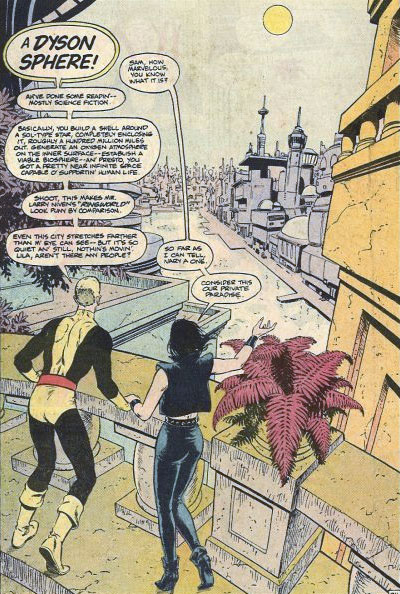
Dyson spheres need great big walls
To keep the world from spilling out
They make them out of buckyballs
And use gravitons for grout- Mister Skin
How would you spend your time in/on a Dyson Sphere?
This honorable gent saw more of life than a bohemian whirling dervish, I am proud to have called him my friend...
For Carmen...I have always fancied old garments more than new. I have always thought that even a borrowed, found or second-hand cloth had few drawbacks. That this cloth on my back, legs or head would still warm the body, yet also warm my soul in unexpected ways. A path of discovery you might say, if you have experienced the feeling. Please remember anyone's old and faded flannel shirt, its color a pastel fragrance of desert and bloom, a softness nothing new ever knows, yet a clarity you can never forget. I have not always run naked in life and when clothed I have found that I'm best in a used guise, something comfortable, a friendly cloth that lays to the wind, that my cheek might nap against, that my anguish might have it's slumber.
Now comes the moment when all else is lost, when all fails but mortality. I am a devotee before the moment, yet after the fact of knowing. I am lost before I am found. I was not as defined until I found your assistance. Life seems a courtesan that beckons yet I'm never sure. Unenlightened I confess. You are a thread chosen for strength that sows's a garment to last forever with your friends. That some of you may be woven into me, only gives me comfort. Old friend, I must say I love you, as all would say that know you true. But I say I love because I've known you. I've seen sparks come from you!
Yesterday I remember skipping stones on the water. Today I only see the water. Frame by frame, chip-by-chip, stroke-by-stroke, image-by-image, story-by-story, a rhythm griped by intention and softened by humility. In recent years I've watched you let forms seem to shape themselves as you a witness preformed the duty, the honorable art. Always excitement and drama, always dedication and a seemingly endless inspiration over flows into those you know. You live your art, your passion, as a towering standard of human struggle and endurance, yet still open and always approachable.
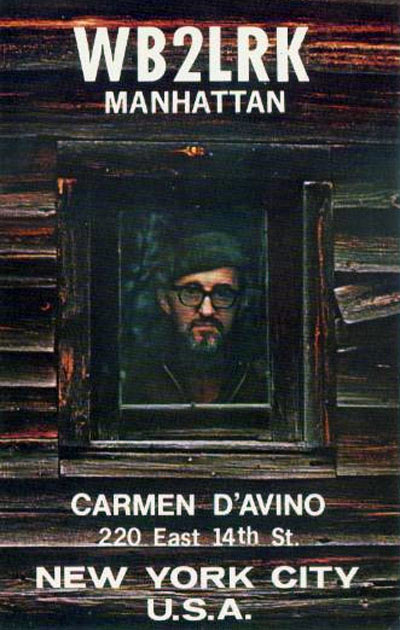
Carmen D'Avino profile on North Country Public Radio: Art Without Borders
Acceptance speech by Professor Irwin Corey given on April 18, 1974, Alice Tully Hall, Lincoln Center, New York. Transcribed by Richard Corey
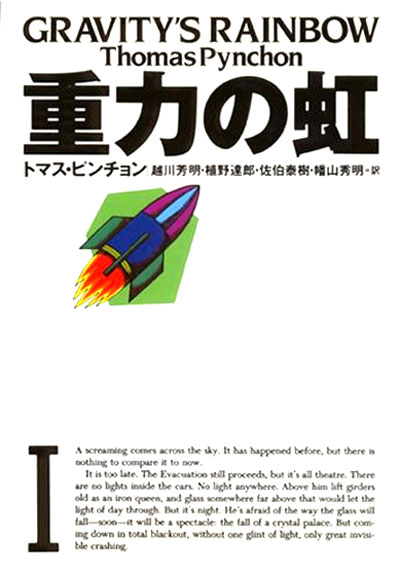
Thank you, Jack, my apologies if we're as...if you were as confused as I was. The jury has determined to divide the prize between two writers. To Thomas Pynchon, for GRAVITY'S RAINBOW which bridges the gap between the two cultures and puts the world of manipulation and paranoia within the perspectives of history. To Isaac Bashevis Singer for A CROWN OF FEATHERS and a life-time of distinguished work revealing a skeptical, philosophical and mischievous obsession with human and demonic character. I present this not to Mr. Singer, but to Mr. Pynchon.

However... I accept this financial stipulation - ah - stipend in behalf of, uh, Richard Python for the great contribution and to quote from some of the missiles which he has contributed...Today we must all be aware that protocol takes precedence over procedure. However you say - WHAT THE - what does this mean... in relation to the tabulation whereby we must once again realize that the great fiction story is now being rehearsed before our very eyes, in the Nixon administration... indicating that only an American writer can receive...the award for fction, unlike Solzinitski whose fiction doesn't hold water. Comrades - friends, we are gathered here not only to accept in behalf of one recluse - one who has found that the world in itself which seems to be a time not of the toad - to quote even Studs Terkel. And many people ask "Who are Stud's Terkel?" It's not "Who are Stud's Terkel?" it's "Who am Stud's Terkel?" This in itself as an edifice of the great glory that has gone beyond, and the intuitive feeling of the American people, based on the assumption that the intelligence not only as Mencken once said, "He who underestimates the American pubic - public, will not go broke." This is merely a small indication of this vast throng gathered here to once again behold and to perceive that which has gone behind and to that which might go forward into the future...we've got to hurdle these obstacles. This is the main deterrent upon which we have gathered our strength and all the others who say, "What the hell did that get?" - We don't know. We've got to perforce withold the loving boy... And as Miller once said in one of his great novels- what did he ... that language is only necessary when communication is endangered. And you sit there bewildered, and Pinter who went further said "It is not the lack of communication but fear of communication." That's what the Goddamn thing is it's we fear - communication. Oh - fortunately the prize has only been given to authors - unlike the Academy Award which is given to a female and a male, indicating the derision of the human specie - God damn it! But we have no paranoia, and Mr. Pynchon has attained, and has created for himself serenity, and it is only the insanity that has kept him alive in his paranoia. We speak of the organ...of the orgasm...Who the hell wrote this? And the jury has determined to divide the prize between two writers - to Thomas Pynchon for his GRAVITY'S RAINBOW. Now GRAVITY'S RAINBOW is a token of this man's genius...he told me so himself...that he could...in other words, have been more specific, but rather than to allude the mundane, he has come to the conclusion that brevity is the importance of our shallow existence. God damn. Ladies and Gentlemen. To the distinguished panel on the, on the dais and to the other winners, for poetry and religion and science. The time will come when religion will outlive its usefulness. Marx, Groucho Marx, once said that religion is the opiate of the people. I say that when religion outlives its usefulness, then opium...will be the opiate...Ahh that's not a bad idea... All right...However, I want to thank Mr. Guinzburg, Tom Guinzburg of the Viking Press, who has made it possible for you people to be here this evening to enjoy the Friction Citation - the Fiction Citation. GRAVITY'S RAINBOW - a small contribution to a certain degree, since there are over three and a half billion people in the world today. 218 of them ... million live in the United States which is a very, very small amount compared to those that are dying elsewhere...Well, I say that you will be on the road to new horizons, for we who live in a society where sex is a commodity and a politician can become a TV personality, it's not easy to conform if you have any morality...I, I, I said that myself many years ago...But I do want to thank the bureau...I mean the committee, the organization for the $10,000 they've given out...tonight they made over $400,000 and I think that I have another appointment. I would like to stay here, but for the sake of brevity I, I must leave. I do want to thank you, I want to thank Mr. TurKAL. I want to thank Mr. Knopf who just ran through the auditorium* and I want to thank Breshnev, Kissinger - acting President of the Unites States - and also want to thank Truman Capote and thank you.
* referring to the streaker who ran nude across the stage.
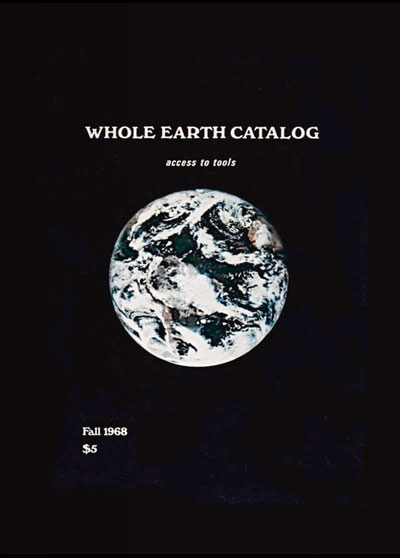
The WHOLE EARTH CATALOG functions as an evaluation and access device. With it, the user should know better what is worth getting and where and how to do the getting. An item is listed in the CATALOG if it is deemed:
CATALOG listings are continually revised according to the experience and suggestions of CATALOG users and staff.
We are as gods and might as well get good at it. So far, remotely done power and glory — as via government, big business, formal education, church — has succeeded to the point where gross defects obscure actual gains. In response to this dilemma and to these gains a realm of intimate, personal power is developing — power of the individual to conduct his own education, find his own inspiration, shape his own environment, and share his adventure with whoever is interested. Tools that aid this process are sought and promoted by the WHOLE EARTH CATALOG.
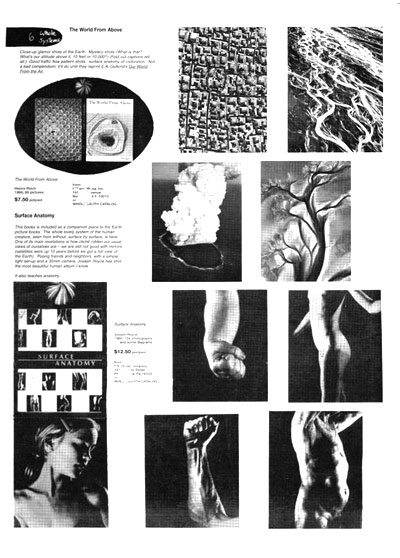
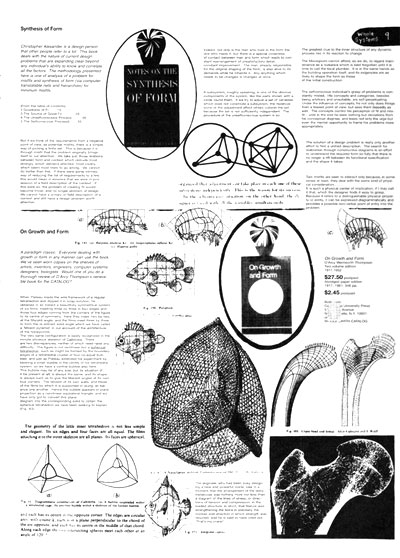
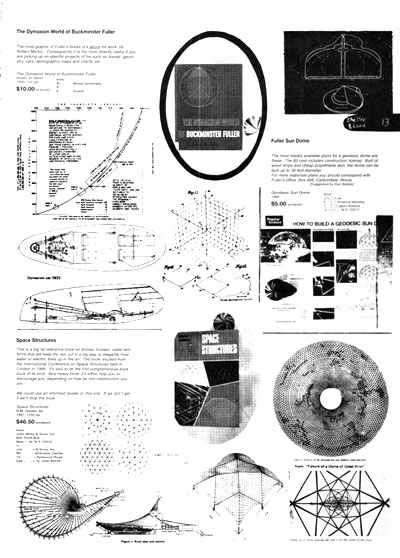
Information wants to be free. Information also wants to be expensive. Information wants to be free because it has become so cheap to distribute, copy, and recombine — too cheap to meter. It wants to be expensive because it can be immeasurably valuable to the recipient. That tension will not go away. It leads to endless wrenching debate about price, copyright, 'intellectual property', the moral rightness of casual distribution, because each round of new devices makes the tension worse, not better.
- Stewart Brand, from May 1985 Whole Earth Review
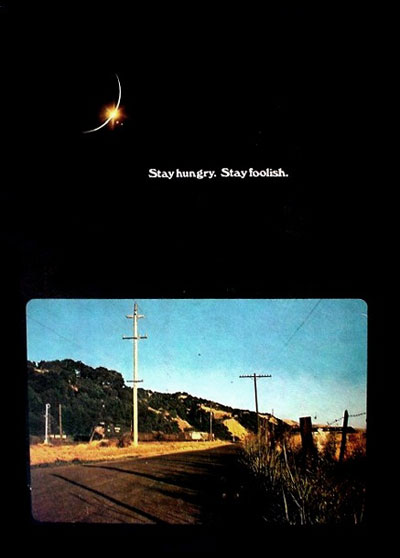
Issues of The Whole Earth Catalog may now be accessed online at wholeearth.com.
By Stewart Brand From MIT Technology Review, May 2005
Over the next ten years, I predict, the mainstream of the environmental movement will reverse its opinion and activism in four major areas: population growth, urbanization, genetically engineered organisms, and nuclear power.
Reversals of this sort have occurred before. Wildfire went from universal menace in mid-20th century to honored natural force and forestry tool now, from "Only you can prevent forest fires!" to let-burn policies and prescribed fires for understory management. The structure of such reversals reveals a hidden strength in the environmental movement and explains why it is likely to keep on growing in influence from decade to decade and perhaps century to century.
The success of the environmental movement is driven by two powerful forces romanticism and science that are often in opposition. The romantics identify with natural systems; the scientists study natural systems. The romantics are moralistic, rebellious against the perceived dominant power, and combative against any who appear to stray from the true path. They hate to admit mistakes or change direction. The scientists are ethicalistic, rebellious against any perceived dominant paradigm, and combative against each other. For them, admitting mistakes is what science is.
There are a great many more environmental romantics than there are scientists. That's fortunate, since their inspiration means that most people in developed societies see themselves as environmentalists. But it also means that scientific perceptions are always a minority view, easily ignored, suppressed, or demonized if they don't fit the consensus story line.
Take population growth. For 50 years, the demographers in charge of human population projections for the United Nations released hard numbers that substantiated environmentalists' greatest fears about indefinite exponential population increase. For a while, those projections proved fairly accurate. However, in the 1990s, the U.N. started taking a closer look at fertility patterns, and in 2002, it adopted a new theory that shocked many demographers: human population is leveling off rapidly, even precipitously, in developed countries, with the rest of the world soon to follow. Most environmentalists still haven't got the word. Worldwide, birthrates are in free fall. Around one-third of countries now have birthrates below replacement level (2.1 children per woman) and sinking. Nowhere does the downward trend show signs of leveling off. Nations already in a birth dearth crisis include Japan, Italy, Spain, Germany, and Russia whose population is now in absolute decline and is expected to be 30 percent lower by 2050. On every part of every continent and in every culture (even Mormon), birthrates are headed down. They reach replacement level and keep on dropping. It turns out that population decrease accelerates downward just as fiercely as population increase accelerated upward, for the same reason. Any variation from the 2.1 rate compounds over time.
That's great news for environmentalists (or it will be when finally noticed), but they need to recognize what caused the turnaround. The world population growth rate actually peaked at 2 percent way back in 1968, the very year my old teacher Paul Ehrlich published The Population Bomb. The world's women didn't suddenly have fewer kids because of his book, though. They had fewer kids because they moved to town.
Cities are population sinks-always have been. Although more children are an asset in the countryside, they're a liability in the city. A global tipping point in urbanization is what stopped the population explosion. As of this year, 50 percent of the world's population lives in cities, with 61 percent expected by 2030. In 1800 it was 3 percent; in 1900 it was 14 percent.
The environmentalist aesthetic is to love villages and despise cities. My mind got changed on the subject a few years ago by an Indian acquaintance who told me that in Indian villages the women obeyed their husbands and family elders, pounded grain, and sang. But, the acquaintance explained, when Indian women immigrated to cities, they got jobs, started businesses, and demanded their children be educated. They became more independent, as they became less fundamentalist in their religious beliefs. Urbanization is the most massive and sudden shift of humanity in its history. Environmentalists will be rewarded if they welcome it and get out in front of it. In every single region in the world, including the U.S., small towns and rural areas are emptying out. The trees and wildlife are returning. Now is the time to put in place permanent protection for those rural environments. Meanwhile, the global population of illegal urban squatters which Robert Neuwirth's book Shadow Cities already estimates at a billion is growing fast. Environmentalists could help ensure that the new dominant human habitat is humane and has a reduced footprint of overall environmental impact.
Along with rethinking cities, environmentalists will need to rethink biotechnology. One area of biotech with huge promise and some drawbacks is genetic engineering, so far violently rejected by the environmental movement. That rejection is, I think, a mistake. Why was water fluoridization rejected by the political right and frankenfood by the political left? The answer, I suspect, is that fluoridization came from government and genetically modified (GM) crops from corporations. If the origins had been reversed as they could have been the positions would be reversed, too.

Tomato fetus. Image by Greenpeace
Ignore the origin and look at the technology on its own terms. (This will be easier with the emergence of "open source" genetic engineering, which could work around restrictive corporate patents.) What is its net effect on the environment? GM crops are more efficient, giving higher yield on less land with less use of pesticides and herbicides. That's why the Amish, the most technology-suspicious group in America (and the best farmers), have enthusiastically adopted GM crops.
There has yet to be a public debate among environmentalists about genetic engineering. Most of the scare stories that go around (Monarch caterpillars harmed by GM pollen!) have as much substance as urban legends about toxic rat urine on Coke can lids. Solid research is seldom reported widely, partly because no news is not news. A number of leading biologists in the U.S. are also leading environmentalists. I've asked them how worried they are about genetically engineered organisms. Their answer is "Not much," because they know from their own work how robust wild ecologies are in defending against new genes, no matter how exotic. They don't say so in public because they feel that entering the GM debate would strain relations with allies and would distract from their main focus, which is to research and defend biodiversity.
The best way for doubters to control a questionable new technology is to embrace it, lest it remain wholly in the hands of enthusiasts who think there is nothing questionable about it. I would love to see what a cadre of hard-over environmental scientists could do with genetic engineering. Besides assuring the kind of transparency needed for intelligent regulation, they could direct a powerful new tool at some of the most vexed problems in the field.
For instance, invasive species. Most of the current mass extinctions of native species is caused by habitat loss, a problem whose cure is well known-identify the crucial habitats and preserve, protect, and restore them. The second greatest cause of extinctions is coming from invasive species, where no solution is in sight. Kudzu takes over the American South, brown tree snakes take over Guam (up to 5,000 a square kilometer), zebra mussels and mitten crabs take over the U.S. waterways, fire ants and fiendishly collaborative Argentine ants take over the ground, and not a thing can be done. Volunteers like me get off on yanking up invasive French broom and Cape ivy, but it's just sand castles against a rising tide. I can't wait for some engineered organism, probably microbial, that will target bad actors like zebra mussels and eat them, or interrupt their reproductive pathway, and then die out.
Now we come to the most profound environmental problem of all, the one that trumps everything: global climate change. Its effect on natural systems and on civilization will be a universal permanent disaster. It may be slow and relentless higher temperature, rising oceans, more extreme weather getting progressively worse over a century. Or it may be abrupt climate change: an increase of fresh water in the north Atlantic shuts down the Gulf Stream within a decade, and Europe freezes while the rest of the world gets drier and windier. (I was involved in the 2003 Pentagon study on this matter, which spelled out how a climate change like the one 8,200 years ago could occur suddenly.)

Three Mile Island nuclear power plant. Photo by Christopher Millette
Can climate change be slowed and catastrophe avoided? They can to the degree that humanity influences climate dynamics. The primary cause of global climate change is our burning of fossil fuels for energy.
So everything must be done to increase energy efficiency and decarbonize energy production. Kyoto accords, radical conservation in energy transmission and use, wind energy, solar energy, passive solar, hydroelectric energy, biomass, the whole gamut. But add them all up and it's still only a fraction of enough. Massive carbon sequestration (extraction) from the atmosphere, perhaps via biotech, is a widely held hope, but it's just a hope. The only technology ready to fill the gap and stop the carbon dioxide loading of the atmosphere is nuclear power.
Nuclear certainly has problems accidents, waste storage, high construction costs, and the possible use of its fuel in weapons. It also has advantages besides the overwhelming one of being atmospherically clean. The industry is mature, with a half-century of experience and ever improved engineering behind it. Problematic early reactors like the ones at Three Mile Island and Chernobyl can be supplanted by new, smaller-scale, meltdown-proof reactors like the ones that use the pebble-bed design. Nuclear power plants are very high yield, with low-cost fuel. Finally, they offer the best avenue to a hydrogen economy, combining high energy and high heat in one place for optimal hydrogen generation.
The storage of radioactive waste is a surmountable problem (see "A New Vision for Nuclear Waste," December 2004). Many reactors now have fields of dry-storage casks nearby. Those casks are transportable. It would be prudent to move them into well-guarded centralized locations. Many nations address the waste storage problem by reprocessing their spent fuel, but that has the side effect of producing material that can be used in weapons. One solution would be a global supplier of reactor fuel, which takes back spent fuel from customers around the world for reprocessing. That's the kind of idea that can go from "Impractical!" to "Necessary!" in a season, depending on world events.
The environmental movement has a quasi-religious aversion to nuclear energy. The few prominent environmentalists who have spoken out in its favor, Gaia theorist James Lovelock, Greenpeace cofounder Patrick Moore, Friend of the Earth Hugh Montefiore have been privately anathematized by other environmentalists. Public excoriation, however, would invite public debate, which so far has not been welcome.
Nuclear could go either way. It would take only one more Chernobyl-type event in Russia's older reactors (all too possible, given the poor state of oversight there) to make the nuclear taboo permanent, to the great detriment of the world's atmospheric health. Everything depends on getting new and better nuclear technology designed and built.
Years ago, environmentalists hated cars and wanted to ban them. Then physicist Amory Lovins came along, saw that the automobile was the perfect leverage point for large-scale energy conservation, and set about designing and promoting drastically more efficient cars. Gas-electric hybrid vehicles are now on the road, performing public good. The United States, Lovins says, can be the Saudi Arabia of nega-watts: Americans are so wasteful of energy that their conservation efforts can have an enormous effect. Single-handedly, Lovins converted the environmental movement from loathing of the auto industry to fruitful engagement with it.
Someone could do the same with nuclear power plants. Lovins refuses to. The field is open, and the need is great.
Within the environmental movement, scientists are the radical minority leading the way. They are already transforming the perspective on urbanization and population growth. But their radicalism and leadership will have to increase if humanity is to harness green biotech and step up to its responsibilities for the global climate. The romantics are right, after all: we are indivisible from the earth's natural systems

I will begin this with my defense. Hair can become a large part of a person, both metaphorically and literally. As those little follicles grow, so does your attachment to the little buggers. Many of us develop these relationships with our hair, no matter how frazzled, curly or flat. From perms–reeking with regret, to mullets–brimming with business (in the front), it is only understandable, give these deep-seated bonds, hair cuts can be momentous experiences. It's difficult to part with those strands. And in this particular case, I had enough hair chopped off to make a thick sweater for a golden retriever. Trimmed to the chin–and bangs too.
Leaving the salon, I was satisfied, yet fascinated with this new 'do. It was impossible to keep my nosy fingers out of it. As I combed through the back, the side, the other side, it was so strange to feel it suddenly end before the shoulders. I couldn't stop looking at it either. As I checked my newly-minted bangs in the rear view mirror, a brown blur came into my periphery. Before my brain could fire those neurons to my leg muscles to break, or even before those neurons could reach my arms to steer out of the way–it was too late. The fate of the chipmunk was sealed. Vanity killed the chipmunk.
